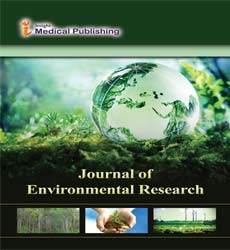A research into the microbial hydrolysis and bioconversion of coal
Valentino S Junior Te’o*
Queensland University of Technology, Australia
Received Date: 2022-07-16 | Accepted Date: 2022-07-19 | Published Date: 2022-07-28
Abstract
Background and Research Problem: Coal is an abundant and economical feedstock for the production of energy globally. In Australia, coal is mined primarily in Queensland, New South Wales and Victoria. The predominant use for coal is to generate electricity, with the 430.9 million tonnes of coal mined 2013/14; 375.1 million tonnes was exported to Asia (Australian Office of the Chief Economist, 2015). In 2013, Australia was the world's fifth-largest coal producer, after China, the United States, India, and Indonesia (WCA, 2014). Victoria hosts 430 billion tonnes of brown coal, representing a significant proportion of the world’s brown coal resource. Burning coal for fuel is economically important worldwide, but decades of production and emission of Green House Gases such as CO2 and CH4 have contributed to Climate change. The research at QUT focuses on cleaner alternative methods for the conversion of feedstocks such as lignocellulosics and coal to energy. Emphasis for this research is on understanding the complex bioreactions during microbial hydrolysis of coal, in order to design more cost-effective bioconversion processes for different coal types from different parts of Australia. Methodology: Different coal types (eg. Brown, Black and Shale) were treated with microbial consortia using Batch and Fed Batch controlled conditions, with gas samples removed and analyzed using gas chromatography. Different samples of microbial consortia were tested, for their contribution during the bioconversion reactions. Findings: So far, up to 30 % CH4 and 60% CO2 have been generated over a period of 5-10 days, with a mass reduction of around 35% (Figure 1). Identifications of different microbial consortia have been achieved, with the genus Bacillus and Lisinibacillus found important during the production of CH4. Conclusion & Significance: Microbial bioconversion of coal to bioproducts such as biogases offer a cleaner alternative for energy production, but importantly, more cost effective bioprocess designs are needed that relies on a critical fundamental understanding and subsequent application of the microbial activities.
Open Access Journals
- Aquaculture & Veterinary Science
- Chemistry & Chemical Sciences
- Clinical Sciences
- Engineering
- General Science
- Genetics & Molecular Biology
- Health Care & Nursing
- Immunology & Microbiology
- Materials Science
- Mathematics & Physics
- Medical Sciences
- Neurology & Psychiatry
- Oncology & Cancer Science
- Pharmaceutical Sciences
